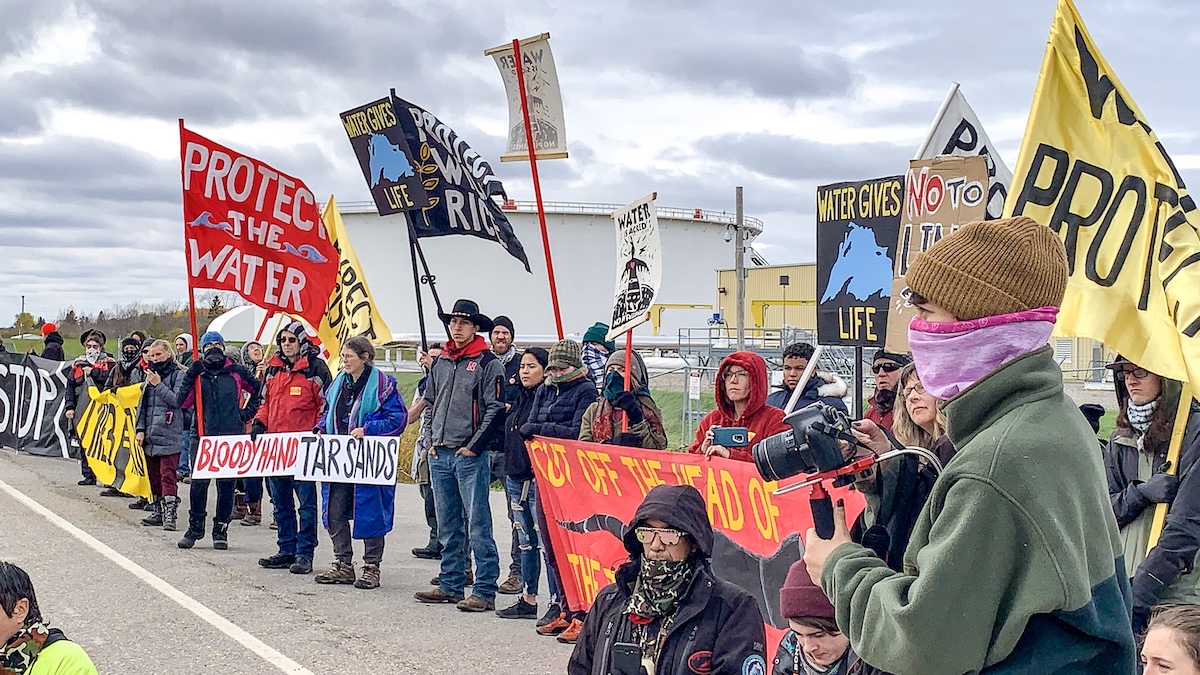APRIL 8, 2019
Pardon the Confusion! Aid to Central America and the “Crisis” at the Border
by JAMES PHILLIPS FacebookTwitterRedditEmail

The Trump Administration says there is a crisis at the U.S. border with Mexico. The President is frustrated with the governments of Guatemala, Honduras, and El Salvador because they have not done enough to stop emigration from their countries, despite U.S. aid. The State Department announced that it will stop some U.S. aid to these countries. News reports indicate that the aid to be cut is economic and humanitarian, but that “security”aid (to police and military) will be maintained. In fact, just before the State Department announcement, the U.S. Homeland Security Secretary signed a joint agreement with the governments of Honduras, Guatemala, and El Salvador to increase cooperation and support around “security”issues. Many Republicans and Democrats in Congress and many private humanitarian and economic aid agencies argue that more aid, not less, is needed to improve conditions in these Central American countries.
Other Members of Congress see this whole issue somewhat differently. Some are sponsoring and supporting a bill (the Berta Cáceres Act) that would review and stop “security”aid to these countries because that aid goes to police and military that governments use to forcefully repress popular peaceful protest and for human rights violations. The Act was introduced in the last Congress, but it is being re-introduced now with a Democratic majority in the House. So is aid to Central America a solution to the crisis of migration from Central America? Confusing! Some realities to consider.
The number of people who arrived at the U.S. southern border during February 2019 numbered around 60,000, according to official estimates. The number for March alone is now reported to be over 100,000. Almost half of these people are fleeing Guatemala, most of the rest are Hondurans, with a smaller percentage of Salvadorans. And another “caravan”of migrants that is expected to number as many as 20,000, is already forming in Honduras and setting out for Mexico and the U.S.
These numbers are indeed overwhelming, and from the perspective of U.S. immigration officials, the asylum seekers themselves who are forced into dire conditions for weeks at the border, and the border communities that must accommodate such an influx of humans, this is indeed a “crisis.”But most of these migrants and asylum seekers are fleeing what is, from their perspective, a much greater crisis in their home countries—a combination of dire poverty, constant insecurity, and violence from gangs, drug trafficking, and government sponsored or condoned violence to repress dissent, on top of a rapidly deteriorating economy.
The old distinction between economic immigrants seeking jobs and opportunity and asylum seekers fleeing violence and threat does not apply so clearly for these Central Americans. In Honduras, the official poverty rate is expected to reach 70 percent this year, with “extreme poverty”(defined by international economic institutions) at over 45 percent. But in  Honduras, conditions of poverty make people also much more vulnerable to violent abuse from anyone more powerful or wealthy—gangs, drug lords, police, military, large landowners. A policy of impunity protects powerful individuals from prosecution for crimes against the poor, while the poor themselves are subject to criminalization for any attempt to defend themselves. In most recent years, less than10 percent of violent crimes against poor people in Honduras have even been investigated, much less prosecuted. Honduras, along with El Salvador and Guatemala, continues to have one of the highest murder rates in the world. When Hondurans say they come to the U.S. seeking economic security, they usually also mean they are seeking relief from violence.
Honduras, conditions of poverty make people also much more vulnerable to violent abuse from anyone more powerful or wealthy—gangs, drug lords, police, military, large landowners. A policy of impunity protects powerful individuals from prosecution for crimes against the poor, while the poor themselves are subject to criminalization for any attempt to defend themselves. In most recent years, less than10 percent of violent crimes against poor people in Honduras have even been investigated, much less prosecuted. Honduras, along with El Salvador and Guatemala, continues to have one of the highest murder rates in the world. When Hondurans say they come to the U.S. seeking economic security, they usually also mean they are seeking relief from violence.
For years, both the U.S. and the Honduran governments have claimed that U.S. aid is essential to strengthen police and government institutions, provide security, and promote economic development in order to keep people from fleeing. This would be a reasonable policy if the governments and the security forces were ‘clean”and reliable stewards for all their people, and if lack of development were the root of the problem. But in fact, development itself,as it is currently carried out in Honduras IS the problem.
The economic development model pursued by the Honduran government with the active prompting and support of the United States is based on extraction of basic resources for the U.S. and the world market—mining, logging, large-scale agro-industry and, to a lesser extent, tourism. All of these are carried out without the consent of local communities. There are literally hundreds of examples in which whole communities have been either forcibly removed from their lands by military or police to make way for mining or agro-industry. or have been forced to abandon the land and their way of life as extractive projects pollute their rivers and soils beyond use. This situation is extant in both Honduras and Guatemala. What do you do if you are forcibly turned from a self-reliant farmer into a landless job seeker and your community is dispersed?
In the 1980s, the Reagan Administration urged this development model on the Honduran government (“Reaganomics for Honduras”it was sometimes called), and since the 1990s it has been upgraded and pursued with increasing intensity, especially in the last few years. In the early 1980s the Honduran Catholic Bishops Conference and even some Honduran government economists issued warnings about where this extractive development model would lead. Their warnings have proven prescient. In these decades, thousands of rural farm families—poor peasants and Indigenous communities—have been displace, migrated to cities, failed to find employment, and sunken into urban poverty. The assembly plant industry relies on these displaced people and it provides some low paying jobs, but never enough. Large numbers of children and families have grown up in urban poverty, susceptible to emerging gangs and all forms of violence, in a country where the police themselves are often corrupt and involved in violence and the courts seldom protect ordinary people. Under this sort of development, poverty and violence have not decreased but rather increased in the past decade, according to international agencies and Honduran economists.
It is worth remembering frequently that this situation has its roots in the development model that successive U.S. and Honduran governments have pursued in Honduras for the past thirty years. The fruits of this misguided model are now apparent in countries like Honduras and Guatemala and at the U.S. southern border. More such “development”is likely only to perpetuate the crisis. More security aid to police and military without thorough political reform is likely to perpetuate repression. Despite U.S. and Honduran government statements, the voices of ordinary people and the statistics of human rights organizations indicate little progress, and even a worsening situation. So all the aid has not resolved the conditions that force people to flee Central America for the north. The caravans are stark symptoms of this failure. The extractive, privatized model of development that ignores with impunity the basic rights of people and communities is a root cause.
Many U. S. citizens—including the Vice-President, the Secretary of State, and the Chief of Mission at the U.S. embassy in Honduras—say that these Central Americans should stay home and solve their own problems. This opinion ignores the fundamental role the U.S. is playing in encouraging and supporting a model of economic and social “development”and a political situation in Central America that perpetuates these problems. It also conveniently ignores the reality that we benefit from the products derived from such violent extractive projects—antimony for our cellphones, other important and precious metals, raw materials for paper products, agricultural products, and much more.
As for the gangs and the drug traffickers that plague Central American countries—at least some of these stem from U.S. employment of drug lords and gangs in drugs-for-arms deals to supply the Contras trying to overthrow the Sandinista revolution in Nicaragua in the 1980s (the subject of a U.S. newspaper exposéand a feature movie); and U.S. deportation of Latino gangs that were home-grown in the U.S. The militarization of the region since the 1980s has also introduced a huge supply of arms from the U.S. and elsewhere that continue in circulation. “Security aid”adds to this. The problems that Central Americans are fleeing now are not entirely, or even mostly, of their own creation.
Aid that is really humanitarian and goes directly into supporting people’s needs may be helpful in the short run, but in the present economic and political context even that is often a band aid rather than a cure unless it actually helps to empower people to change their country’s current economic model and political context—something that both the Honduran and the U.S. governments resist. “Security aid”(to police and military) is a key part of the problem when it tramples on human rights to enforce a model of development that enriches a few at the cost of misery for the many. But for now, the Trump Administration seems likely to continue that kind of aid.
Central America does need “development”but of a different kind and within a different political context. This also requires that U.S. citizens press changed and enlightened, not reactive, polices toward Honduras and other Central American countries. The Berta Cáceres Act now in Congress is a step toward that change in policy. It is only a beginning, but an important one.
James Phillips, Ph.d., is a cultural anthropologist at Southern Oregon University. His book, Honduras in Dangerous Times: Resistance and Resilience, was published by Lexington Books in 2015.


